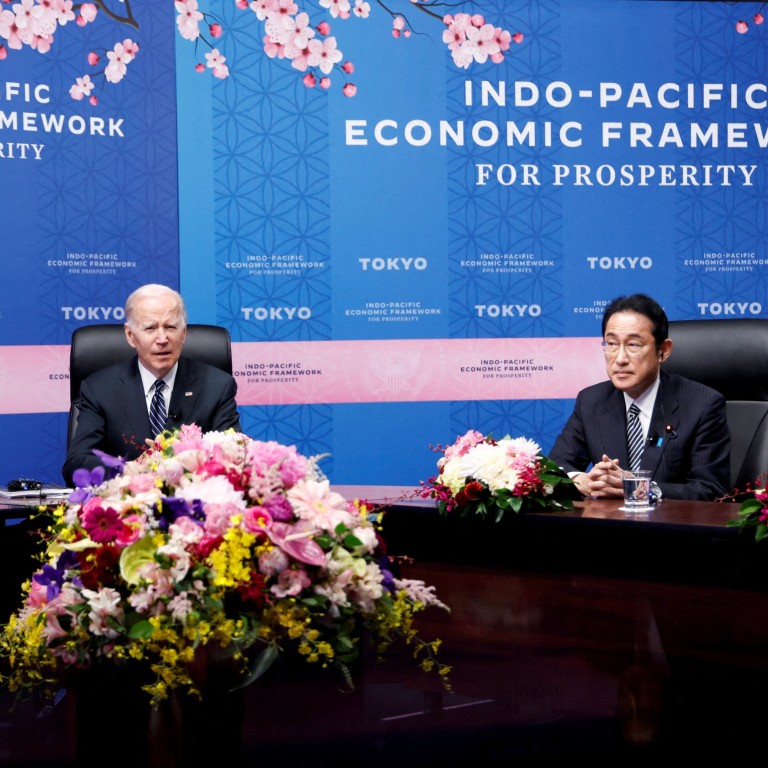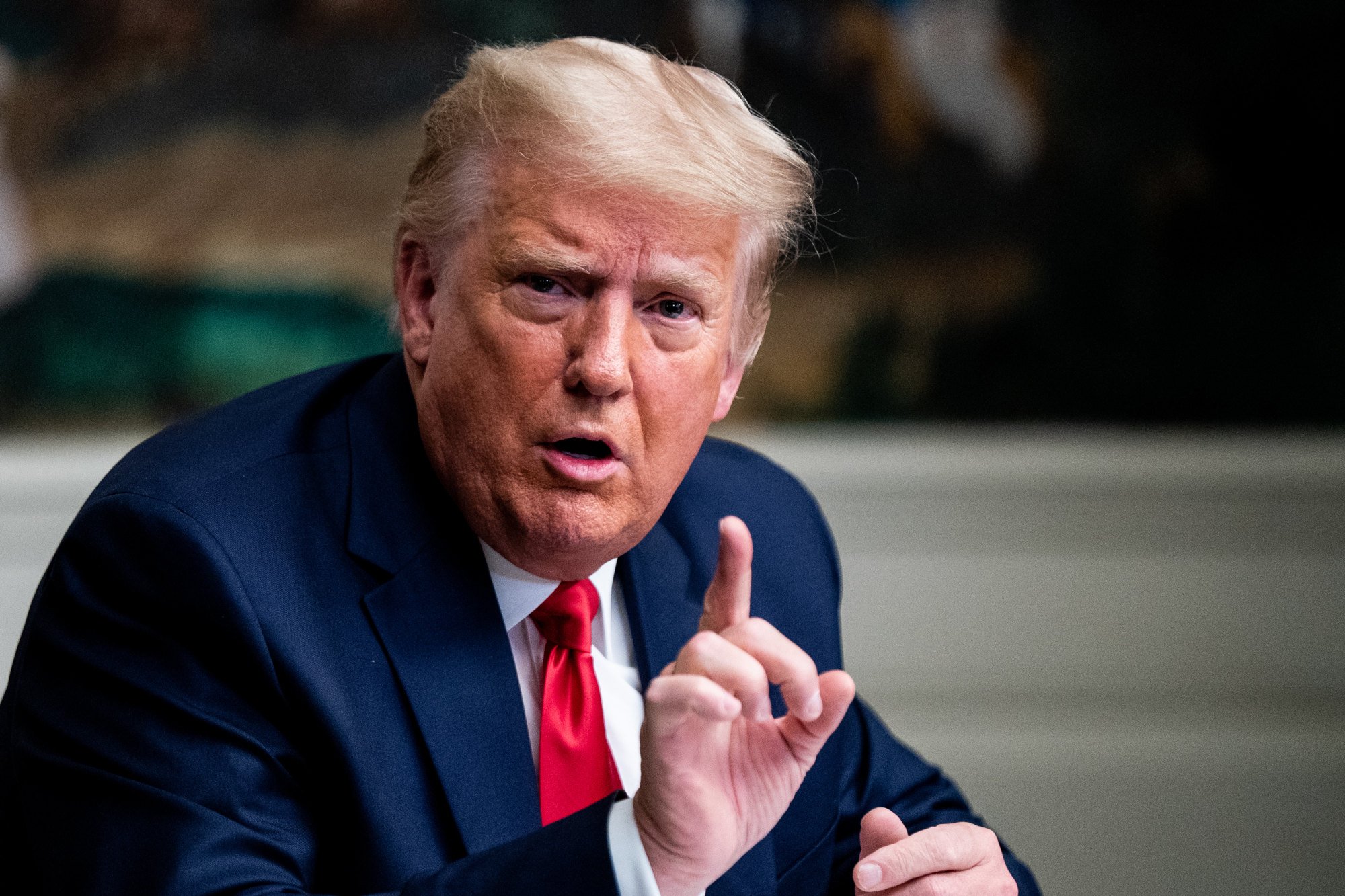
Can the new US-led Indo-Pacific Economic Framework really compete with China’s mammoth Belt and Road Initiative?
- The IPEF, whose members account for 40 per cent of global GDP, is aimed at complementing defence strategies to counter China’s growing influence
- But Beijing has already spent a fortune on projects in dozens of countries, while upcoming US elections may mean less enthusiasm for Biden’s new agreement
On May 23 in Tokyo – the second stop of his two-nation Asia tour – Biden launched the Indo-Pacific Economic Framework (IPEF), its members jointly accounting for around 40 per cent of global GDP.
The IPEF addresses the absence of an economic sandbag to complement America’s Indo-Pacific Strategy, which has long leaned heavily on defence.

Three days after the framework was announced, Fiji became the first Pacific nation to join the pact. Others may follow suit.
Yet, despite the warm reception to the IPEF, expectations remain grounded given the possible debacles that lie ahead. Policy continuity is foremost.
With US midterm elections set for November, commitments made in the broad economic deal may come under the spotlight. While the pact is being packaged as an executive agreement, the new US Congress may well want to have a say on it.
As China’s FM visits Fiji, Albanese says Australia ‘dropped the ball’ on the Pacific
At present, Biden’s Democratic Party holds a slim majority in both the Senate and the House, but November’s elections could alter the equation. If the Republicans get the upper hand, the administration’s trade and foreign policy, including the IPEF, may face difficulties.
Furthermore, with presidential elections ahead in November 2024, worries loom large about a new government walking away from the deal or renegotiating terms after much time and resources have been expended on fleshing out the details.

Although there does seem to be bipartisan recognition of the need to have an economic pillar to compete with China, the specifics remain debated. Hence, the potential disruptive impact of leadership transition in US policy cannot be understated, particularly in trade-related accords.
This could be what is driving the US to try and conclude IPEF negotiations by late next year, to coincide with Washington’s hosting of the 21-member Asia-Pacific Economic Cooperation meeting.
If successful with the IPEF, Biden will score a major diplomatic coup and raise Washington’s profile in the region, credentials he can leverage should he make another run for the presidency in 2024. But uncertainty may seep in if IPEF talks are delayed until election year.
Biden launches IPEF, with 12 Asia-Pacific economies signing on
The prospect of Trump throwing his hat in the ring and again running for president may dampen enthusiasm towards the framework, which he is unlikely to support.
The extent of political and diplomatic capital that Biden will spend on defending IPEF at home – and keeping aspiring member countries engaged when the going gets rough – will determine its future.
The trade-off between incentives offered to get a regional buy-in, and the relative costs and benefits for American workers and consumers will be a serious test for the White House.

The failure of past US-led economic measures such as the Blue Dot Network and the Economic Prosperity Network to gain traction means the odds are also stacked against the IPEF. The onus is on the US to show the framework will be a different story, with a different ending.
Concerns about technological decoupling and disruptions of enmeshed supply chains also unsettle regional countries.
This helped motivate Singapore to join the IPEF and, at the same time, support Beijing’s ongoing bid to join the Comprehensive and Progressive Trans-Pacific Partnership (CPTPP) free trade agreement, a revised version of the TPP championed by Obama.
Asean’s interest in Biden’s IPEF a vote for better ‘balance of power’ in region
Pro-trade Vietnam has also signed up to the IPEF and has likewise ratified both the CPTPP and its rival, the Regional Comprehensive Economic Partnership, whose biggest member economy is China.
The infrastructure component of the IPEF also has its work cut out in terms of offering an alternative to China’s Belt and Road Initiative.
While much has been said and written about concerns surrounding Beijing’s multi-year construction binge, it continues to break ground, even amid the pandemic. Its portfolio includes recently completed projects such as a high-speed railway in Laos and ongoing railway works in Malaysia and Indonesia, to name but a few.
China goes on Asia-Pacific trade offensive in wake of US’ IPEF push
Washington has taken some steps in Asia recently though. Last year, the US International Development Finance Corporation loaned US$500 million to American firm First Solar to invest in solar panel production in India. In March this year, the US Agency for International Development became co-chair of the India-led Coalition for Disaster Resilient Infrastructure. But with the US still the underdog in the infrastructure race, more effort needs to be made to catch up with China.
During the Quad leaders’ summit in Tokyo last month, the four countries involved agreed to release more than US$50 billion for infrastructure in the Indo-Pacific over the next five years. In last month’s Asean-US summit hosted by Washington, the US committed to investing US$40 million to mobilise US$2 billion in financing from various sources to underwrite clean energy projects in Southeast Asia.
However, even if all these are combined, they are still dwarfed by the enormity of China’s Belt and Road Initiative. Projects under its banner were valued at a staggering US$4.3 trillion by the first quarter of 2020. A 2019 estimate by the World Bank said belt and road projects in 50 developing countries between 2013 and 2018 were worth US$500 billion.
Malaysia’s Mahathir says new US-led trade group intended to ‘isolate China’
Thus, the road ahead for the IPEF will not be a smooth one. The ability to unleash private capital to meet the region’s burgeoning infrastructure demands may turn things around. But if this new treasure chest is not properly unlocked, it will be an uphill climb.
Across the board in Southeast Asia, the appetite for anything from infrastructure to capital and technology is enormous. This is especially so as regional countries strive to recover from the pandemic and respond to ever growing local demand.
The pie is still a big one, and Asean remains pragmatic and ever-inclusive, so there is always room for new economic initiatives. But whether the IPEF is too little, too late, only the future can tell.
Lucio Blanco Pitlo III is a research fellow at the Asia Pacific Pathways to Progress Foundation. The views expressed in this piece are his own.


